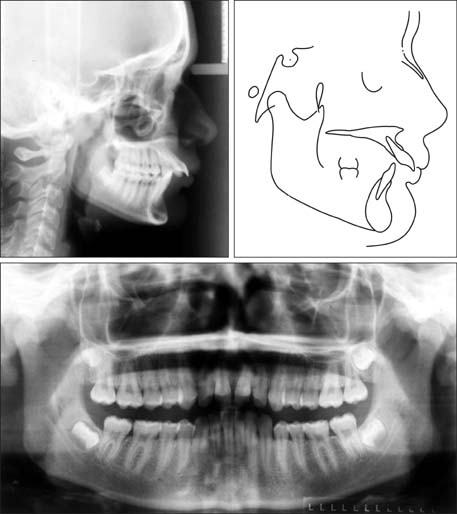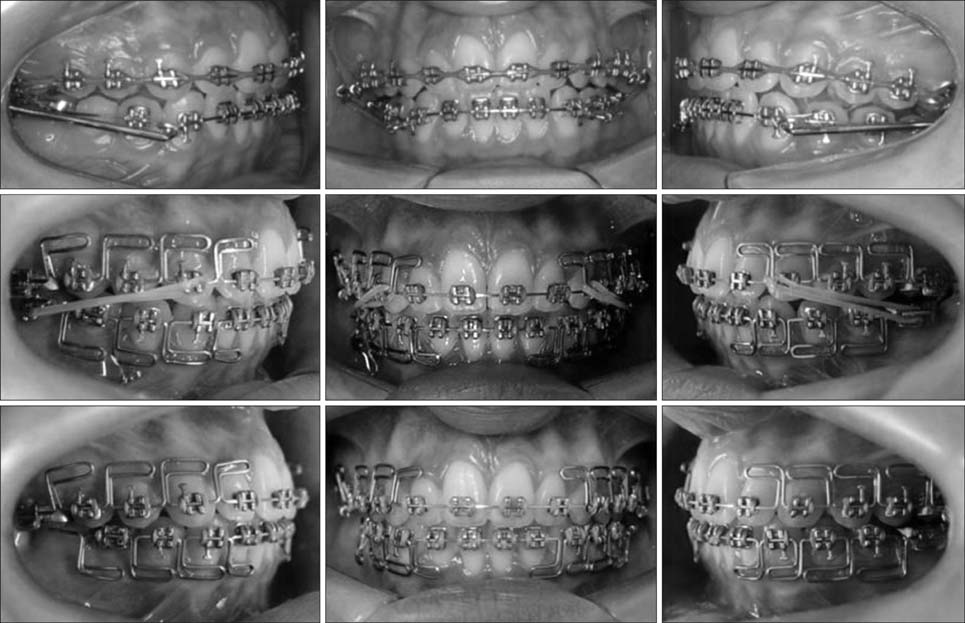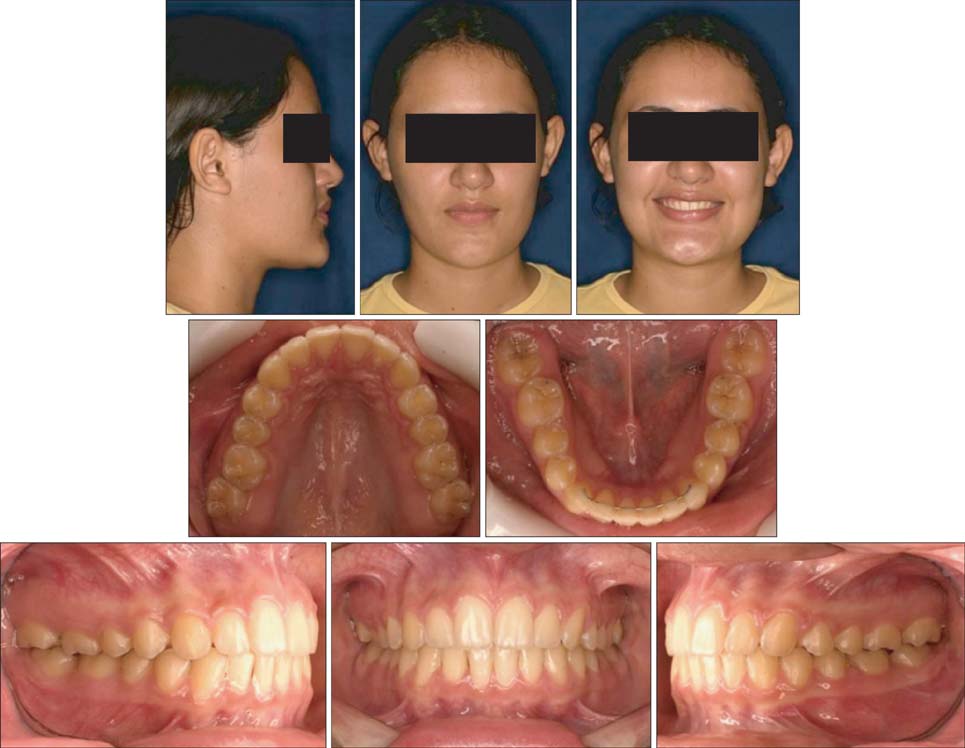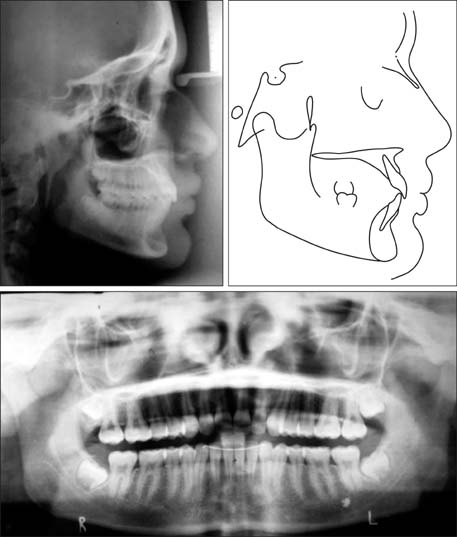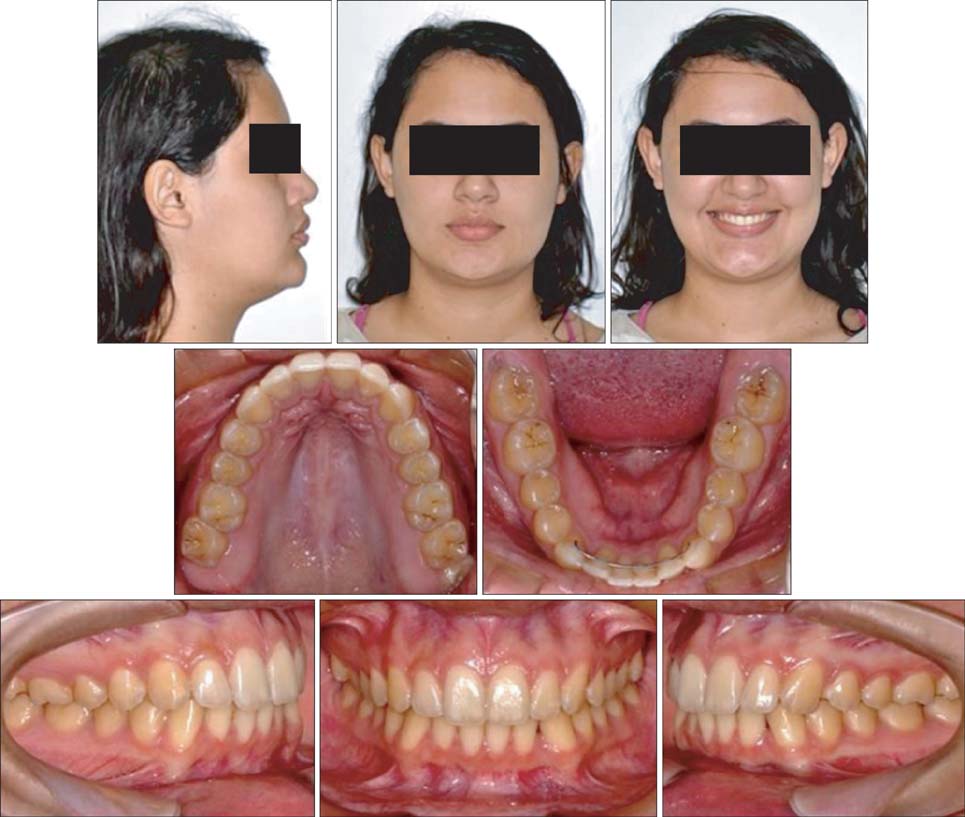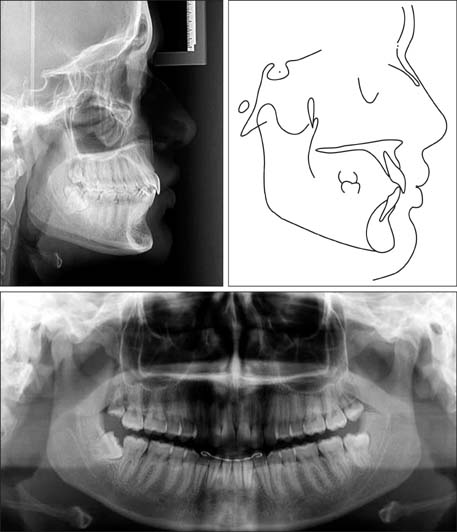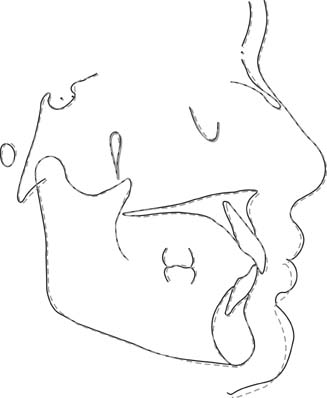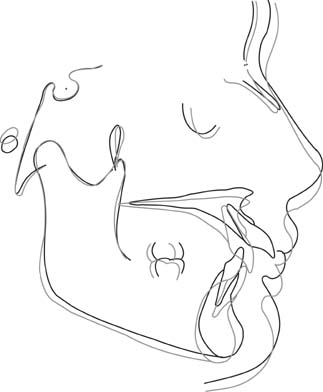Korean J Orthod.
2014 Sep;44(5):268-277. 10.4041/kjod.2014.44.5.268.
Correction of Angle Class II division 1 malocclusion with a mandibular protraction appliances and multiloop edgewise archwire technique
- Affiliations
-
- 1Discipline of Orthodontics, School of Dentistry, Federal University of Maranhao, Sao Luis-Maranhao, Brazil. bvfreitas1@hotmail.com
- 2Private Practice, Sao Luis-Maranhao, Brazil.
- 3Discipline of Orthodontics, School of Dentistry, Federal University of Ceara, Fortaleza, Brazil.
- 4Department of Orthodontics, Bauru Dental School, University of Sao Paulo, Sao Paulo, Brazil.
- KMID: 1726421
- DOI: http://doi.org/10.4041/kjod.2014.44.5.268
Abstract
- A Brazilian girl aged 14 years and 9 months presented with a chief complaint of protrusive teeth. She had a convex facial profile, extreme overjet, deep bite, lack of passive lip seal, acute nasolabial angle, and retrognathic mandible. Intraorally, she showed maxillary diastemas, slight mandibular incisor crowding, a small maxillary arch, 13-mm overjet, and 4-mm overbite. After the diagnosis of severe Angle Class II division 1 malocclusion, a mandibular protraction appliance was placed to correct the Class II relationships and multiloop edgewise archwires were used for finishing. Follow-up examinations revealed an improved facial profile, normal overjet and overbite, and good intercuspation. The patient was satisfied with her occlusion, smile, and facial appearance. The excellent results suggest that orthodontic camouflage by using a mandibular protraction appliance in combination with the multiloop edgewise archwire technique is an effective option for correcting Class II malocclusions in patients who refuse orthognathic surgery.
MeSH Terms
Figure
Reference
-
1. Angle EH. Classification of malocclusion. Dental Cosmos. 1899; 41:248–264.2. Thüer U, Ingervall B. Pressure from the lips on the teeth and malocclusion. Am J Orthod Dentofacial Orthop. 1986; 90:234–242.
Article3. Jenny J, Cons NC. Comparing and contrasting two orthodontic indices, the Index of Orthodontic Treatment need and the Dental Aesthetic Index. Am J Orthod Dentofacial Orthop. 1996; 110:410–416.
Article4. Dolce C, Mansour DA, McGorray SP, Wheeler TT. Intrarater agreement about the etiology of Class II malocclusion and treatment approach. Am J Orthod Dentofacial Orthop. 2012; 141:17–23.
Article5. Coelho Filho CM. Mandibular protraction appliances for Class II treatment. J Clin Orthod. 1995; 29:319–336.6. Kim YH. Tratamiento de maloclusiones severas mediante la técnica de alambre Edgewise Multiloop (Multiloop Edgewise Arch-Wire, MEAW). Ortodoncia Clínica. 2004; 7:22–34.7. WHO. Oral Health Surveys: Basic Methods. Geneva, Switzerland: World Health Organization;1997.8. Ghafari J, Shofer FS, Jacobsson-Hunt U, Markowitz DL, Laster LL. Headgear versus function regulator in the early treatment of Class II, Division 1 malocclusion: a randomized clinical trial. Am J Orthod Dentofacial Orthop. 1998; 113:51–61.
Article9. Wong L, Hägg U, Wong G. Correction of extreme overjet in 2 phases. Am J Orthod Dentofacial Orthop. 2006; 130:540–548.
Article10. Stahl F, Baccetti T, Franchi L, McNamara JA Jr. Longitudinal growth changes in untreated subjects with Class II Division 1 malocclusion. Am J Orthod Dentofacial Orthop. 2008; 134:125–137.
Article11. Baccetti T, Stahl F, McNamara JA Jr. Dentofacial growth changes in subjects with untreated Class II malocclusion from late puberty through young adulthood. Am J Orthod Dentofacial Orthop. 2009; 135:148–154.
Article12. Mihalik CA, Proffit WR, Phillips C. Long-term follow-up of Class II adults treated with orthodontic camouflage: a comparison with orthognathic surgery outcomes. Am J Orthod Dentofacial Orthop. 2003; 123:266–278.
Article13. Ruf S, Pancherz H. Orthognathic surgery and dentofacial orthopedics in adult Class II Division 1 treatment: mandibular sagittal split osteotomy versus Herbst appliance. Am J Orthod Dentofacial Orthop. 2004; 126:140–152.
Article14. Bock NC, von Bremen J, Ruf S. Occlusal stability of adult Class II Division 1 treatment with the Herbst appliance. Am J Orthod Dentofacial Orthop. 2010; 138:146–151.
Article15. Janson G, Valarelli FP, Cançado RH, de Freitas MR, Pinzan A. Relationship between malocclusion severity and treatment success rate in Class II nonextraction therapy. Am J Orthod Dentofacial Orthop. 2009; 135:274.e1–274.e8.
Article16. Johnston LE Jr. A comparative analysis of Class II treatments. In : Vig PS, Ribbens KA, editors. Science and clinical judgment in orthodontics. Monograph 19, Craniofacial Growth Series. Ann Arbor: Center for Human Growth and Development, The University of Michigan;1986.17. Janson I. Skeletal and dentoalveolar changes in patients treated with a bionator during prepubertal and pubertal growth. In : McNamara JA, Ribbens KA, Howe RP, editors. Clinical alteration of the growing face. Monograph 14, Craniofacial Growth Series. Ann Arbor: Center for Human Growth and Development, The University of Michigan;1983.18. Janson G, Barros SEC, de Freitas MR, Henriques JFC, Pinzan A. Class II treatment efficiency in maxillary premolar extraction and nonextraction protocols. Am J Orthod Dentofacial Orthop. 2007; 132:490–498.
Article19. Xu TM, Liu Y, Yang MZ, Huang W. Comparison of extraction versus nonextraction orthodontic treatment outcomes for borderline Chinese patients. Am J Orthod Dentofacial Orthop. 2006; 129:672–677.
Article20. Coelho Filho CM. Mandibular protraction appliance IV. J Clin Orthod. 2001; 35:18–24.21. Ruf S, Pancherz H. Dentoskeletal effects and facial profile changes in young adults treated with the Herbst appliance. Angle Orthod. 1999; 69:239–246.22. Ruf S, Pancherz H. Temporomandibular joint remodeling in adolescents and young adults during Herbst treatment: A prospective longitudinal magnetic resonance imaging and cephalometric radiographic investigation. Am J Orthod Dentofacial Orthop. 1999; 115:607–618.
Article23. Kinzinger G, Diedrich P. Skeletal effects in class II treatment with the functional mandibular advancer (FMA)? J Orofac Orthop. 2005; 66:469–490.
Article24. Nalbantgil D, Arun T, Sayinsu K, Fulya I. Skeletal, dental and soft-tissue changes induced by the Jasper Jumper appliance in late adolescence. Angle Orthod. 2005; 75:426–436.25. Ruf S, Pancherz H. Herbst/multibracket appliance treatment of Class II division 1 malocclusions in early and late adulthood. a prospective cephalometric study of consecutively treated subjects. Eur J Orthod. 2006; 28:352–360.
Article26. Popowich K, Nebbe B, Heo G, Glover KE, Major PW. Predictors for Class II treatment duration. Am J Orthod Dentofacial Orthop. 2005; 127:293–300.
Article27. Herrera FS, Henriques JF, Janson G, Francisconi MF, de Freitas KM. Cephalometric evaluation in different phases of Jasper jumper therapy. Am J Orthod Dentofacial Orthop. 2011; 140:e77–e84.
Article28. Franchi L, Baccetti T, McNamara JA Jr. Mandibular growth as related to cervical vertebral maturation and body height. Am J Orthod Dentofacial Orthop. 2000; 118:335–340.
Article
- Full Text Links
- Actions
-
Cited
- CITED
-
- Close
- Share
- Similar articles
-
- A photoelastic study of the effect of loops in arch wire and orthodontic elastics in relief of Curve of Spee
- A comparative study of mandibular tooth development between Angle Class I malocclusion group and Angle Class III malocclusion group
- A study of the etiology of unilateral Class II, division 1 malocclusion
- A cephalometric evalauation of anterior openbite malocclusions treated by multiloop edgewise archwire technique
- Roentgenographic cephalometric study of Angle's Class II, division 1 malocclusion in Korean children


